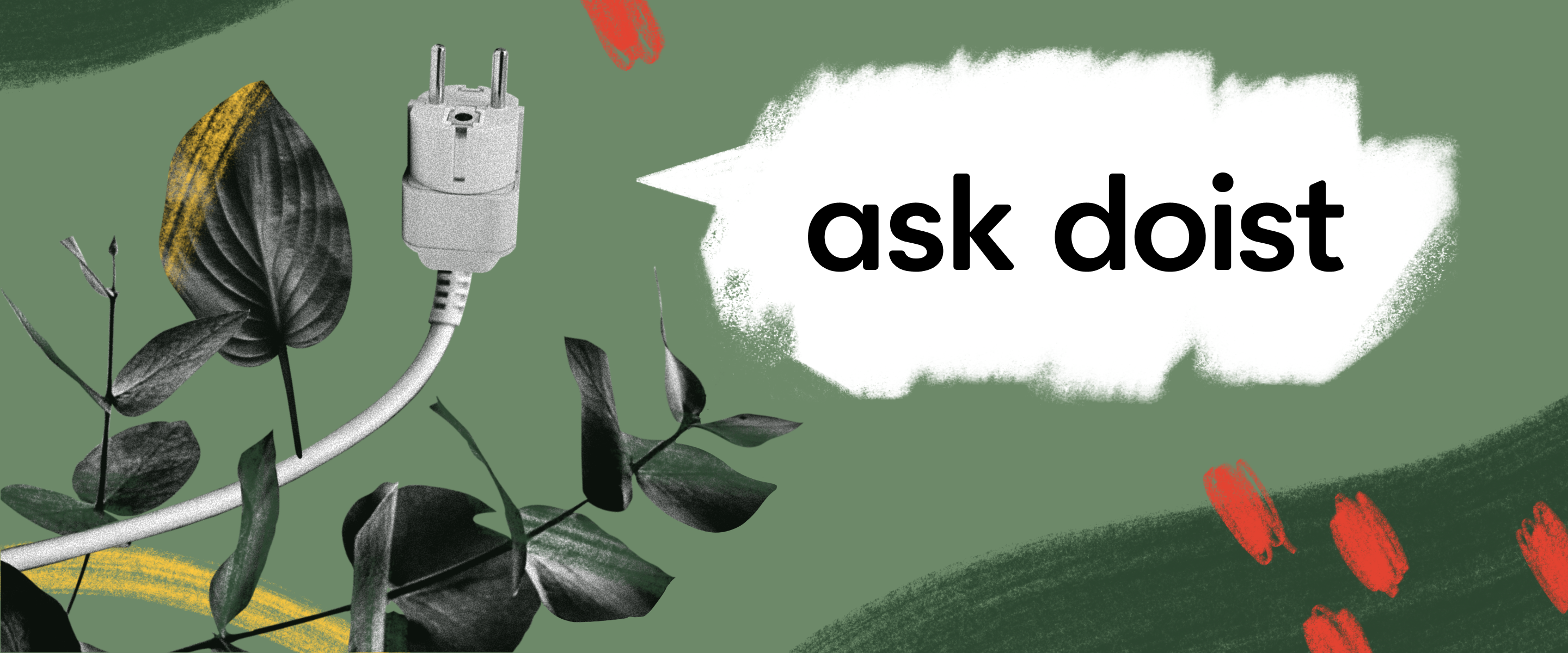One question that’s been on my mind a lot is if it is possible to coexist with my technology without succumbing to it. Every week, I find myself distracted by a different app — be it Instagram or Slack or even Todoist. It’s so easy to get addicted to the dopamine rush you get when you check that task off or get a like notification. My hack to overcome it has been to go cold turkey, but with how increasingly interwoven technology has become, it’s an impractical answer. Also, I don’t want to stop going on Instagram forever. I just don’t want to open it for two seconds to find myself on it three hours later. How does one strike the balance and reach symbiosis with applications designed to entice?
As someone who writes and cares about productivity but also happens to be Very Online™ , I struggle with this question every day. How do you use technology and social media without letting it take over your life?
Your question reminded me of Cal Newport’s book Digital Minimalism (which I reviewed here). This quote sums up the problem perfectly:
“Few want to spend so much time online, but these tools have a way of cultivating behavioral addictions. The urge to check Twitter or refresh Reddit becomes a nervous twitch that shatters uninterrupted time into shards too small to support the presence necessary for an intentional life.”
I’ve felt the tension of wanting to finish writing an article, but also really wanting to see what everyone’s talking about in the Twitterverse. Or trying to get into a new book, but reaching for my phone instead of giving it a real chance.
When it comes to social media apps, you’re not “open[ing] it for 2 seconds to find [yourself] on it three hours later” by accident. It’s by design. Our favorite apps and websites pull us in to their endless scroll and whatever growth-hacking tricks designed to keep us engaged and distracted.
But the claim that we’re powerless against them seems like an exaggeration to me. We do still have agency. But it’s not exactly easy to tear ourselves away.
I salute your efforts to go cold turkey, but you’re right — staying away from social media and technology all together is impractical. Given how many people have used Twitter to find jobs or improve their lives, I dare say it’s also unwise.
Many of us reap tangible benefits from the apps we frequent while simultaneously experiencing negative side effects like social media fatigue and constant distraction. Newport suggests we adopt a more intentional and minimalistic use of technology:
“We cannot passively allow the wild tangle of tools, entertainments, and distractions provided by the internet age to dictate how we spend our time or how we feel. We must instead take steps to extract the good from these technologies while sidestepping what’s bad.”
While I agree with Newport’s diagnosis and even his prescription — a 30-day digital detox to kick off techno-minimalism — it’s a tough pill to swallow. Totally disconnecting for 30 days is a challenging feat under regular circumstances, but it’s made even harder during a global pandemic that’s left fewer alternatives to keep us occupied. If you’re up for the challenge, it’s probably worth it. But I’m not going to recommend an approach I haven’t done and am unlikely to.
I’ll be the first to admit, my relationship with social media isn’t exactly healthy, but there are some concrete things I’ve found that have helped me use social media more on my terms:
Give time tracking a try
Often behaviour change starts with an awareness of the depth of an issue. Actively tracking the amount of time you spend distracted online can serve as an eye-opener and a catalyst for change.
- Automatically track your computer time. Manual tracking is a sure-fire way to underestimate how much time we spend online. Instead, automate your website and app tracking. Download a tool like RescueTime that tracks your time online and sorts it into “Productive” and “Distracting” with a detailed breakdown of how many minutes or hours you spend on each of the websites you access. I personally use Zapier to send a daily report of my RescueTime numbers straight to my Inbox.
- Keep an eye on mobile. Many of us spend an enormous amount of time on our phones; it’s worth knowing where those hours go. For iOS, keep track of your Screen Time in the settings to see your daily and weekly activity. On Android, navigate to your settings to check your Digital Wellbeing numbers.
Similarly to how tracking our spending helps us save, cultivating awareness around our time online can be the first step to course-correcting our habits.
Use social media and apps with intention
There are corners of the internet many of us thoroughly enjoy –– the Facebook group for gardening enthusiasts or the technical Twitter account with great machine learning tips. The problem is by navigating to these valuable spots, we’re plunged into the surrounding feeds and timelines that waste our time and keep us hooked. Instead, approach social media more purposefully.
- Don’t access the home page. Whispering voice: the timeline is where they get ya! For Facebook, bookmark and access your favorite Groups and Pages to avoid hours scrolling aimlessly once you’re on the main page. For Twitter, create a private Twitter list to curate and follow the people and accounts you enjoy the most and save it to your browser bar. Rather than visiting your timeline, only access the list. For any websites you frequently visit, find ways to separate the signal from the noise.
- Narrow your social media experience. Doist’s Head of Marketing, Brenna, started using Instagram to only keep up and connect with people she knows and smaller accounts: “Here’s one thing that made the biggest impact on my Instagram scrolling habit: I unfollowed any person that I don’t have regular conversations with, and unfollowed all brands or ‘influencers’ except for a handful of artists and local accounts that actually spark joy. There’s less content to scroll through and it’s stuff that I genuinely want to see (photos of friends’ kids, etc).”
By creating your own rules for social media (or what Newport calls “operating procedures”), you can enjoy the positive aspects of online connection while avoiding the downsides.
Stop relying on self-control
Rather than relying on our own motivation, intentionally block yourself from using distracting websites and apps as much or as little as you need to.
- Use site-blocking apps. Try out tools like Freedom (MacOS, Windows, Android, iOS, and Chrome) and Self Control (MacOS) to block websites and apps so you can’t access them. I regularly use this tip to get things done. In fact, I have 3:32:02 left on my Self Control timer as I write this. I use site-blocking in another important way: to disconnect during off-hours. I regularly block access to social media during evenings and weekends, because, as it turns out, scrolling social media for hours isn’t a great way to unwind from work.
- Try screen time limits. Doist Product Designer, Luis, says this: “I’m using Screen Time limits for apps like Reeder/News/Twitter (30min combined), Downtime (block all apps) from 11pm-6am, with wind down (heads-up) 45min prior to sleep mode from 11pm-6am. 🤖”
- Go drastic. If you want a more permanent approach, here’s a suggestion from Doist Product Designer, Stijn: “At the start of this year, I removed all social media and news apps from my phone. But I still visited their websites more than I wanted, so I had to go for a more drastic approach. I now block all social media and news websites on my iPhone using Screen Time, and my girlfriend is the only one who knows the password 😅”
Find something better to do
Social media apps and addictive websites are only as powerful as your best alternative. Newport touches on this in Digital Minimalism, arguing we’re tied to our apps because we lack true hobbies:
“For many people, their compulsive phone use papers over a void created by a lack of a well-developed leisure life. Reducing the easy distraction without also filling the void can make life unpleasantly stale—an outcome likely to undermine any transition to minimalism.”
In 2019, I started taking weekly singing lessons, a nice change of pace from my only other hobbies: reading and writing about the internet (yikes). 2020 looks a lot different –– it’s not as easy to take an art class or join a soccer league given distancing restrictions around the world.
But consider a few activities that should be safe to try:
- Get outside for (socially-distanced) hikes or simple sight-seeing
- Lean into cooking and try out new recipes
- Take up playing a musical instrument
- Register for a fun non-work online course
- Start a Zoom movie club with friends (hot take: watching films counts as disconnecting)
Instead of trying so hard to spend less time on social media and on our apps, try spending more time cultivating current hobbies or finding new ones. Coupled with an intentional approach to how we use online tools, these changes can help us gain control of our apps instead of having them control us.
Good luck!

